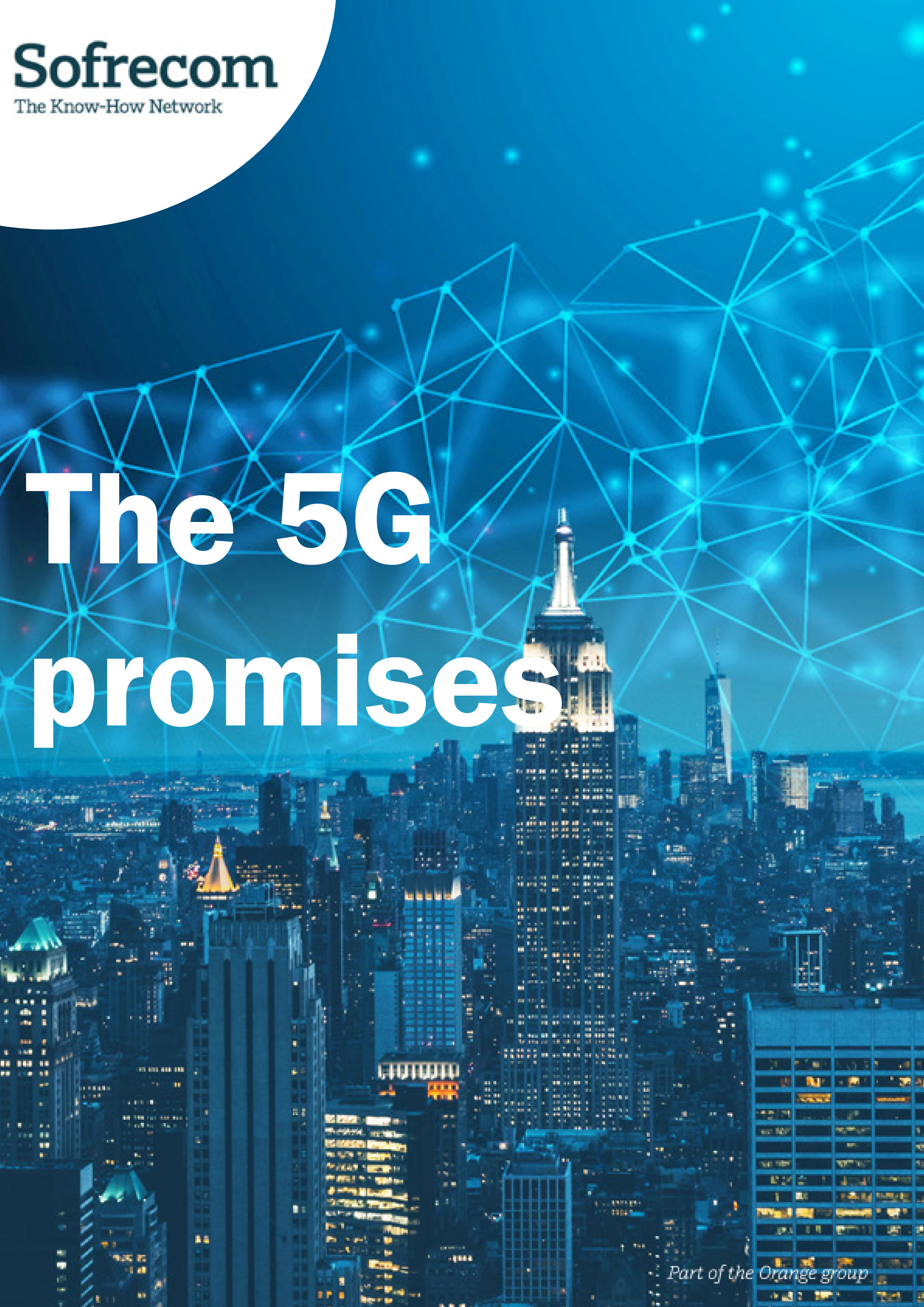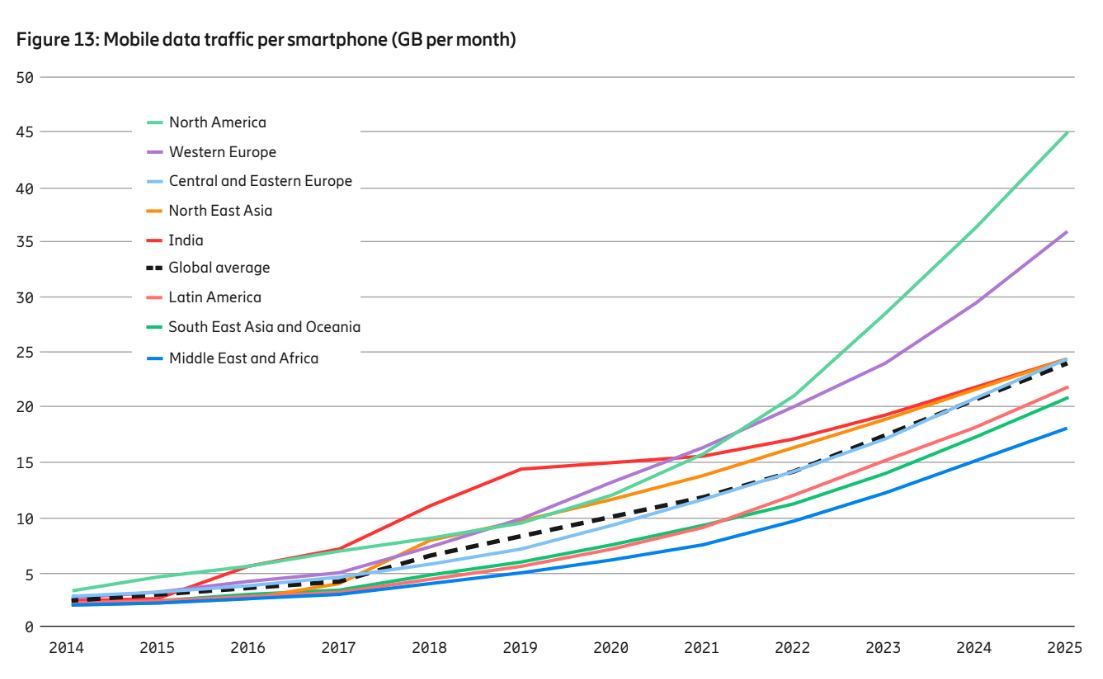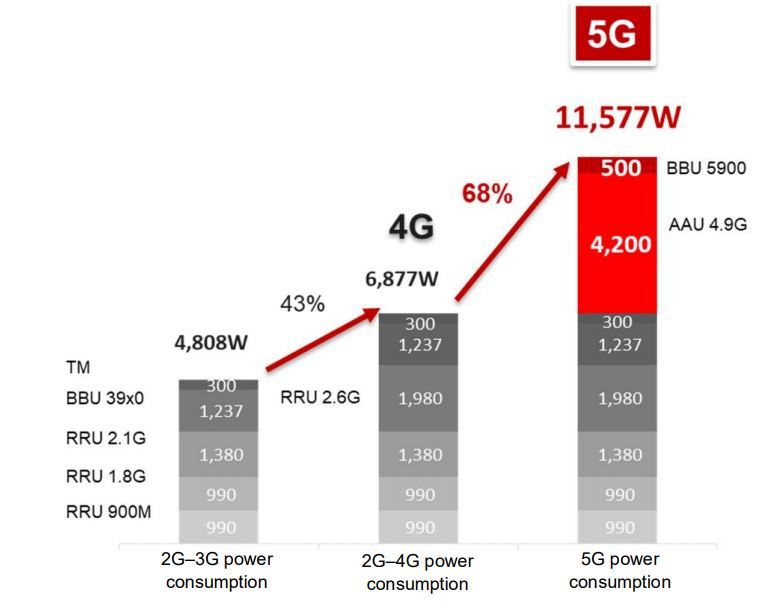
As far as uses and services are concerned, the deployment of 5G is stirring a great deal of enthusiasm. However, one subject continues to worry operators: how to keep their networks’ energy consumption under control. The exponential growth expected in data traffic will likely impact their carbon footprint as much as their operating costs. There are ways of improving the energy efficiency of 5G communications and reducing the consumption of other networks. The objective is clear: to offset additional consumption due to the roll-out of 5G.
The telecoms sector consumes electricity. That energy consumption emits CO2 and costs operators a great deal of money. The largest of them, cognizant of the need for urgent action on the climate, have already gone green. To reduce their carbon footprint, they have built into their CSR commitments a number of targets to lower the electricity consumption in their facilities (networks, data centers) and improve their overall energy efficiency. Some have even turned these efforts into a marketing weapon.
The arrival of 5G will require a new wave of efforts and investments to meet the responsible goals set by 5G standards organizations and control the overall cost of owning a 5G network.
5G: a technology that will need to pass the energy-efficiency test
Average data consumption per smartphone is significantly on the rise: Ericsson expects it to grow from 5.6GB/month in 2018 to 24GB/month in 2025 [1] worldwide.
In France, ARCEP announced, in its 2019 report, that average consumption had reached 6.6 GB per month.

In theory, 5G was designed to support a 1,000-fold increase in mobile data traffic over the next 10 years. Although it is difficult to assess its environmental impact today, the exponential growth in traffic will mathematically increase the total energy consumption of operator networks.
In light of these forecasts, the 5G standardization bodies have set ambitious energy efficiency targets:
The International Telecommunication Union (ITU), for instance, will require 5G operators to improve their energy consumption by a factor of 100 compared to 4G (equipment on the 5G network will need to be up to 100 times less energy-intensive than 4G for the same volume of traffic delivered).
Meanwhile, Next Generation Mobile Networks (NGMN) says in its 5G White Paper that the new technology must halve the average consumption of current networks.
This target, relative to the 1,000-fold increase in traffic, would imply a 2,000-fold increase in the energy efficiency of the 5G network over the next 10 years!
Native energy efficiency solutions
The energy consumption of 5G stated in kbit therefore promises to significantly improve. This improvement will rest on several factors:
The use, as far as hardware is concerned, of massive MIMO technology (mMIMO) which will be the foundation for the advanced performance of 5G. It is distinguished by the use of a high number of smart micro-antennae located on the same panel and considerably improves spectral efficiency. It also benefits from more energy-efficient power amplifiers and processing circuits.
The introduction of energy saving features in base stations (multi-level standby mode) will make it possible to adapt the capacity and performance of the network according to demand and traffic, while maintaining a constant level of service quality. Such “Advanced Sleep Modes” features, already deployed on existing networks, will take on greater importance in a 5G world, having been designed and introduced by the 3GPP 5G standardization.
A predictable increase in consumption in the transition phase
However, 5G tests conducted so far by some operators with the technology currently available have shown that in absolute terms, 5G can consume up to 3 times more energy than 4G.
The commercial implementation of the mMIMO hardware architecture is very recent. The technology is still immature in terms of energy efficiency. Experiments show a marked increase in consumption at two levels: in 5G radio modules (transmission and reception components, power amplifiers); and in baseband equipment, as the higher capacities and speeds of 5G also require greater power for processing and data management.
Furthermore, as highlighted by equipment manufacturer Huawei, the deployment of multi-band sites will lead operators to resize the power supply to the sites and the energy backup solutions in place to absorb peaks in electricity consumption[2]. Existing solutions may therefore need to be improved, or their architecture significantly modified with the use of the latest generation power supply systems.
How can this energy expenditure be kept under control?
In this transitional phase, there exist a variety of solutions to control CAPEX and OPEX.

1.Estimating the benefits of replacing 2G/3G/4G equipment in advance
While equipment replacement does increase CAPEX, energy OPEX will increase if no investments are made. And in the current context – this is a weakness of which OEMs are aware – each new equipment version brought to the market is synonymous with further improvement. Companies thus need to weigh their options in a business case to determine whether it is best that they proceed with immediate replacement, or defer that investment. The equipment maturity level will definitely influence their decision. Entities using hardware and software that have reached the end of their life cycle will fare better by taking immediate action.
2.Deploy energy saving features
5G's Advanced Sleep Modes will provide operators with a considerable source of leverage for controlling their energy OPEX. While not all of them have yet been deployed, their functionalities will eventually operate on several levels, promising a 30 to 40% reduction in a site’s total consumption. They will form the foundation for an intelligent and dynamic network capable of maximizing its energy consumption according to the traffic and services it offers.
3.Carry out tests in pilot cities to measure under real conditions
Real-world measurements in pilot cities are an ideal way to find out how equipment behaves on the energy expenditure front. Such tests make it possible – before massive deployment – to check all the parameters that influence consumption and build a comparative model of the different configurations. This is a key prerequisite for choosing the most energy-efficient response to the network’s performance needs.
4.Impose energy savings criteria in calls for tender
These tests also make it possible to incorporate energy consumption criteria into calls for tender, alongside KPIs and related penalties in the event of non-compliance.
5.Adapt the configuration of radio sites to the needs served by this site
In this new environment, the minimum service levels of sites will need to be determined taking into account the number of potential customers, the type of services provided and the level of criticality of those services. This will enable the best possible fit in terms of configuration (64TR, 32TR), power (80W, 100W, 120W...), back-up solutions and quality of service once the switch to standalone mode (SA) opens up access to slicing, so as to serve demand and changes therein without over-equipping or over-consuming.
Despite the injunctions from the standards bodies and the efforts of equipment manufacturers, 5G operators will see their networks’ energy expenditure increase – however, they will also have the cards in hand to deal with this situation. Radio site configuration will have to take into account a 3rd criterion, in addition to the coverage and capacity of the site: energy consumption. The keys to controlling CAPEX and OPEX will be: thorough planning of equipment replacement, implementation of advanced sleep modes, due “pressure” on equipment manufacturers, and above all, the ability to anticipate the services required and quality demanded of the network.




